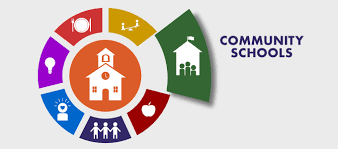Introduction
In recent years, we have seen a significant change in the education landscape with the rise of extended schools and the community schools movement. These pioneering developments focus on providing students with more than just academic support; they aim to offer a comprehensive and holistic range of services that cater to their social, emotional, and physical needs. By working closely with families and local communities, these educational institutions are creating strong foundations that enable young people to flourish both in the classroom and beyond.
The Concept of Extended Schools
Extended schools are educational institutions that expand their core offerings by delivering additional programs and activities outside of traditional school hours. This approach enriches the educational experience for students, particularly those from low-income or disadvantaged backgrounds. These extra services include childcare facilities, before-and-after-school clubs, holiday programs, and opportunities for community engagement. Through collaboration with local agencies, organizations, and residents, extended schools can offer a variety of initiatives that address not just academic achievements but also health and well-being, social cohesion, and life skills development.
The Community Schools Movement
The community schools movement shares much in common with the concept of extended schools but takes its vision even further. Instead of simply offering additional extracurricular activities or resources for students to use outside school hours, community schools establish partnerships between the school itself, local government bodies, businesses, nonprofit organizations, health care providers, and other stakeholders.
By bringing all these parties together under one unified mission – to provide all children with equitable opportunities to excel – community schools transform into hubs where families can access essential services such as healthcare screenings, parenting workshops, adult education classes, job training programs, counseling services, and more. In essence, community schools become vibrant centers of learning that foster strong relationships between parents, teachers, policymakers and other community leaders.
Achieving Success: Key Components
For both extended schools and the community schools movement, there are a few key components that determine their success:
1. Strong leadership and vision: School principals, board members, and other stakeholders must recognize the potential of these approaches and dedicate themselves to executing this vision through practical planning and efficient management.
2. Collaborative partnerships: Building relationships with local organizations is vital in providing a broad range of services that encompass not just academics, but also address the social, emotional, and physical needs of students.
3. Tailored programs and solutions: Each community has its unique challenges; therefore, extended schools and community schools must be adaptable in designing programs that fit the specific needs of their students and surrounding communities.
4. Continuous evaluation and improvement: Gathering data on program effectiveness and adjusting accordingly is essential for achieving long-term success in addressing the diverse needs of the students.
Conclusion
Extended schools and the community schools movement represent a transformative shift in our understanding of what contemporary education should entail. By focusing on the holistic development of children, these approaches cater to their broader needs as individuals — not just students — so they can thrive in an increasingly complex and interconnected world. As such, extended schools and community schools are essential in laying strong foundations that will empower young people to reach their fullest potential and lead enriched lives.





